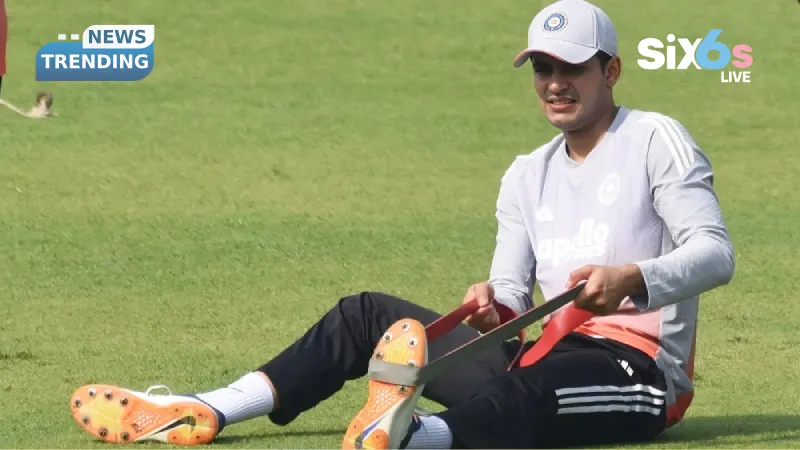The difference between triumph and disaster can be determined by the smallest margin when it comes to cricket. Right now, India’s entire test game plan for Guwahati – batting lineup, captaincy, and overall strategic balance – relies solely on a strained neck. The Captain and cornerstone of India’s evolving new test strategy, Shubman Gill, hasn’t taken part in training during the last two days (nets). In addition to missing nets in Kolkata, he was absent from the nets again in Guwahati; all of which has caused the entire nation to wonder if one strained neck muscle will force a total overhaul of India’s current test starting eleven.
A Captain in Doubt, A Leadership Chain Reaction
If Gill is absent on the field, then Rishabh Pant will be the new Captain, an unexpected storyline for many fans, at least by mid-cycle. Pant’s return to leadership will bring back fan enthusiasm, but also raise tactical questions. Pant leads with adrenaline vs the orthodox; Gill leads with the systems vs his instincts. Both can be very successful, but both lead to two completely different types of cricket. An absence of Gill means that India may enter a must-win Test with a new # 3 and a completely different captaincy temperament.
Batting Order Tetris: India’s Most Delicate Puzzle
The Indian line-up of net bowlers told their own story as well. The batsmen batting were KL Rahul, then Washington Sundar, followed by Yashasvi Jaiswal, and lastly, Dhruv Jurel. If Gill does not bat, Jurel will likely continue to bat at number four, a well-deserved call-up from the bench for Jurel’s courageous play in the Kolkata Test. However, the biggest issue will be which player becomes the next player to drop down to number three. Could it be Sai Sudharsan, or could it be Devdutt Padikkal? Both players have great potential and deserve to bat in this position; however, both also bat with left hands, and if they do, there would be seven left-handers, potentially creating a psychological advantage for Simon Harmer.
The All-Rounder Gambit: A More Radical Solution
India’s “wild card” could be Nitish Reddy, who has been recalled unexpectedly and skipped his last India A match to join the Test team again. By playing Reddy, India will have sacrificed one of their specialist batters to strengthen their all-rounder options, with Jurel remaining as the number four batsman. Reddy bowled alongside Bumrah and Siraj during training sessions. This was no token effort – this was significant bowling. This suggests that India does intend to evaluate Reddy, and if they choose to select him, it will indicate that they intend to play a more dynamic and a longer XI rather than a traditional top seven.
The Gill Void Isn’t Just Skill, It’s Structure
When Gill fell at Kolkata, India lost a batsman, but they also lost an anchor. With the transition periods, Gill’s batting provides a shield for his teammates (Pant, Jaiswal & Rahul) to be expressive with their batting. Without him in these situations, India may lose their batting rhythm as a young captain in history. Smith in 2015, Williamson in 2016 & Root in 2018 were batting anchors before being a captain; Gill is similar. When Gill sits out, India does not simply lose a No. 3 batsman; they lose the keeper of the tempo of the innings.
If India’s Test lineup at the last moment before the Test reveals what happens to Gill about his medical situation then it tells us much more about which route India wants to go down — either the route of stability through continuance, familiarity, and the security of established structure if Gill plays, or a fast-tracked transition if he does not play that is a route that allows Pant to take on the role as lead, Jurel to grow further, and the middle order to be a dynamic ecosystem as opposed to a rigid hierarchical first-class team structure.
Stay updated on the latest cricket news and exciting updates at Six6slive. Dive into our in-depth articles and analyses to connect with the action today!
